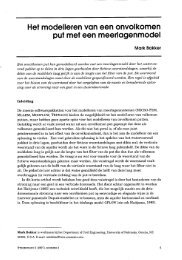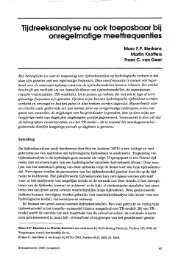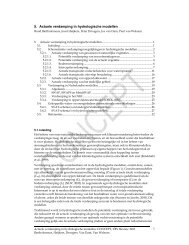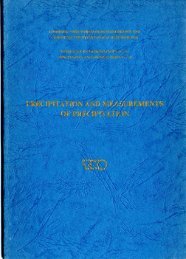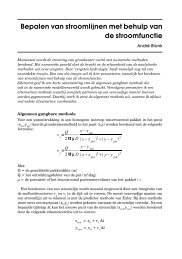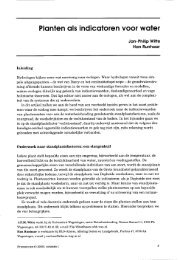Hydrochemistry and energy storage in aquifers - NHV.nu
Hydrochemistry and energy storage in aquifers - NHV.nu
Hydrochemistry and energy storage in aquifers - NHV.nu
Create successful ePaper yourself
Turn your PDF publications into a flip-book with our unique Google optimized e-Paper software.
educ<strong>in</strong>g bacteria. These activities decrease groundwater quality <strong>in</strong> a serious way.<br />
CORROSION AND SCALING<br />
Scal<strong>in</strong>g occurs due to the disturbance of the hydrochemical equilibrium <strong>and</strong> a change <strong>in</strong><br />
m<strong>in</strong>eral concentration, oversaturation <strong>and</strong> hence precipitation occurs consequently. A change<br />
<strong>in</strong> hydrochemical composition may also create a fluid which is more aggressive with<br />
consequently an <strong>in</strong>creased risk of rapid corrosion of the <strong>in</strong>stallation.<br />
The technical <strong>and</strong> economical performances of an aquifer thermal <strong>energy</strong> <strong>storage</strong> system are<br />
very sensitive to the consequences of corrosion <strong>and</strong>/or scal<strong>in</strong>g. Corrosion of screens, cas<strong>in</strong>g,<br />
pipes <strong>and</strong> heat exchanger(s) may <strong>in</strong>crease the depreciation beyond the economical limits.<br />
Scal<strong>in</strong>g can cause clogg<strong>in</strong>g of screens <strong>and</strong> heat exchanger result<strong>in</strong>g <strong>in</strong> an unforeseen <strong>in</strong>crease<br />
<strong>in</strong> cost of ma<strong>in</strong>tenance <strong>and</strong> <strong>in</strong>crease of <strong>in</strong>terruptions <strong>in</strong> the operation of the ATE3<br />
<strong>in</strong>stallation.<br />
8 APPROACH AND SOLUTIONS<br />
The most important approach to solve or to avoid the above stipulated problems related to<br />
aquifer thermal <strong>energy</strong> <strong>storage</strong>, is found <strong>in</strong> water treatment studies <strong>and</strong> experiments.<br />
Two options under consideration at present are:<br />
1. Addition of chemicals.<br />
2. Microbiological <strong>and</strong>/or fluid bed methods <strong>and</strong>/or mechanical removal of solids.<br />
Both methods are applied to compensate for the transition <strong>in</strong> hydrochemical composition of<br />
the (ground)water due to heat<strong>in</strong>g <strong>and</strong> (to a lesser extend) due to cool<strong>in</strong>g.<br />
The first option bears the <strong>in</strong>surmountable disadvantage that with each cycle more chemicals<br />
have to be added (the same groundwater is used periodically) <strong>and</strong> consequently an <strong>in</strong>crease<br />
<strong>in</strong> concentration of added chemicals is unavoidable. This method risks to deteriorate the





